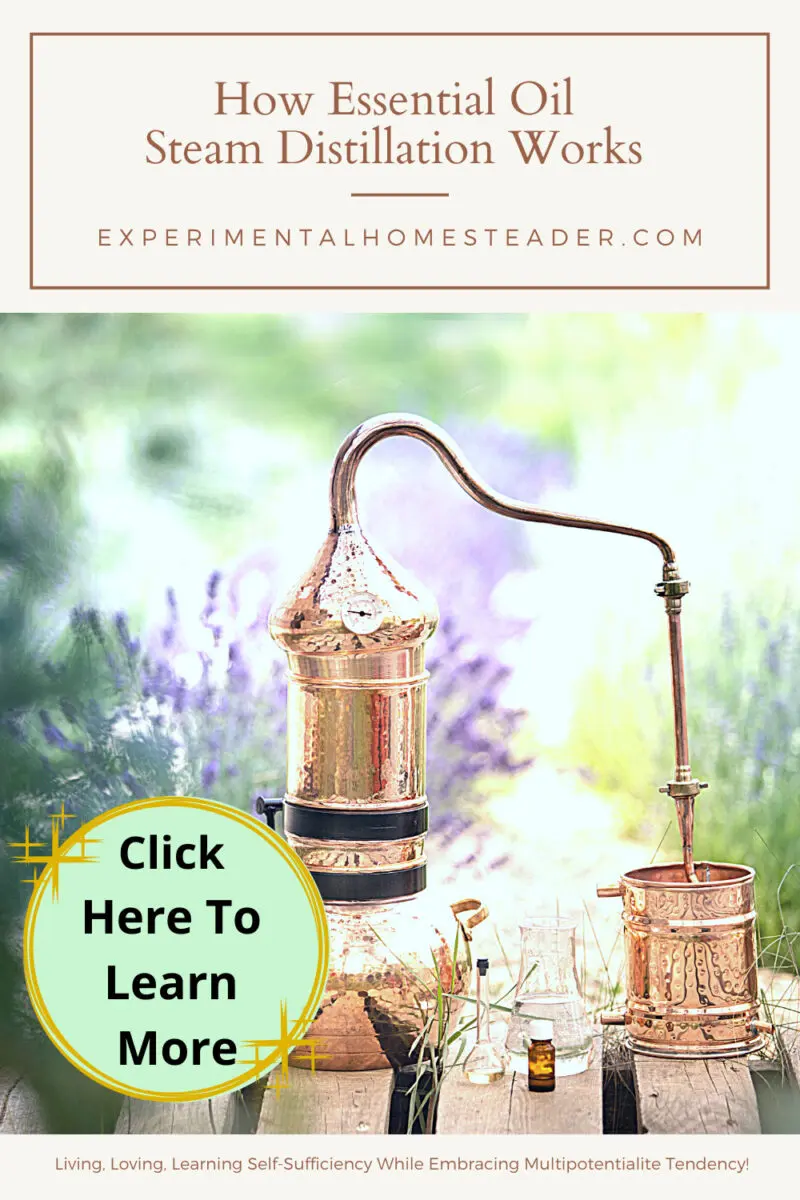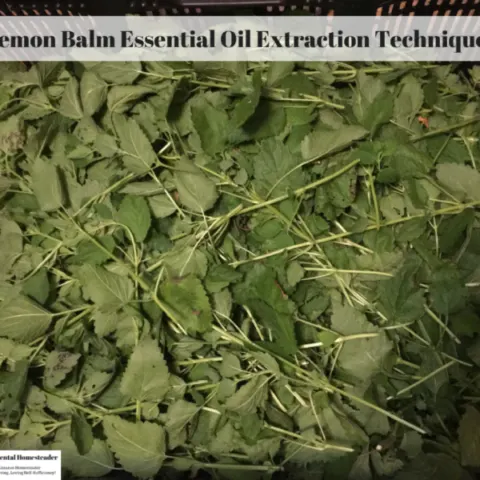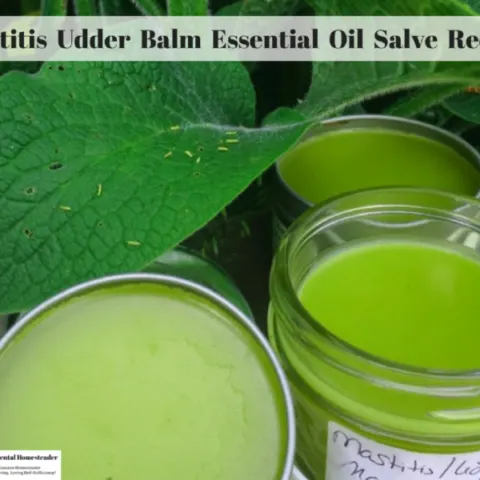Have you ever wondered how essential oil steam distillation works?
Steam distillation has been around for hundreds of years and is an essential oil production process.
For a lot of reasons, this is one of the most favorable method of getting essential oils out of plants.
The steam distillation process is one of two essential oil extraction processes that creates a product that is able to carry the Therapeutic Grade label.
Cold expression is the other process.
How Steam Distillation Works to Produce Essential Oils
Steam distillation works using boiling water, steam and water, or steam alone.
In those three separate but similar steam distilling processes, essential oil is produced by the effect of high temperature steam or water on plant material.
The steam actually ruptures the membranes of oil located inside the plant.
This releases the essential oil inside.
That oil is then carried to a condenser.
The resulting substance is converted back to liquid form, with the essential oil floating on top.
Oil and water are separated, with the water portion of the steam distillation process referred to as flower, hydrolat or hydrosol water.
That water is removed from the oil, and the remaining liquid is 100% essential oil.
What Equipment Is Used in the Steam Distillation Essential Oil Process?
Anything that interacts with the oil extracted from the plant has an effect on its efficacy.
This includes the condenser type, separator and cooking chamber which are used in the steam distillation process.
That is why cooking chambers which are constructed of safe, nonreactive metal are preferred.
The preferred choice here is common stainless steel.
Also, the type of steam distillation used will definitely affect the quality of your essential oil as well as how well it works.
For instance, a vertical steam dissolution procedure is widely regarded as producing the highest quality oils.
What to Look for When Purchasing Steam Distilled Essential Oils
Check with the manufacturer of your essential oil and find out just exactly what essential oil extraction technique they use.
Whether using steam only, steam and water or boiling water, steam distilling plant material to extract essential oil results in a quality product.
But within this process different types of equipment can be used which will affect the end product.
A low temperature combined with low pressure has proven to be an excellent recipe for developing quality essential oils that receive the Therapeutic Grade label.
This is how ancient civilizations slowly and methodically created essential oils that were extremely high in potency and were able to help people with problems such as migraines.
One other thing to look out for concerns how essential oil distributors can cut corners to lower their costs.
Steam distillation, performed properly, can take up to 24 hours.
In many cases 1 ton (2,000 pounds) of raw materials produces just 1 pound of oil!
Ask your essential oil manufacturer if they shorten the distillation time or add solvents to their essential oil distraction process.
Both of these procedures lower the quality of your oil, thereby lessening its effectiveness in treating your physical and mental conditions.
Aromatherapy
Lilac Absolute Of Essence
Do you love the lilac scent? Learn how to preserve the scent of lilacs yourself. You can use the fragrance extraction in homemade bath and body products.
Lemon Balm Essential Oil Extraction Techniques
Make your own scented oils and hydrosols with plant material from your own garden using essential oil extraction techniques.
Mastitis Udder Balm Essential Oil Salve Recipe
It is essential to take care of your goats teats. I wanted something natural so I came up with this homemade balm essential oil salve recipe using comfrey.
Goat Homemade Teat Dip Recipe
This homemade teat dip for goats is easy to make. This particular teat dip solution contains essential oils and simple ingredients plus it does the job!
Peppermint Essential Oil Migraine Remedy
Using a peppermint essential oil migraine remedy is a great way to naturally stop migraine headaches, as long as it works for you.
Aromatherapy Oil Kit
Learn what essential oils you need to include in your basic aromatherapy oil kit and why those essential oils should be included.
Potpourri And Natural Fragrance Extraction
Learn how to make lilac potpourri using flowers from your own garden. Also learn how to dry the flowers, refresh the scent and make the potpourri last.












